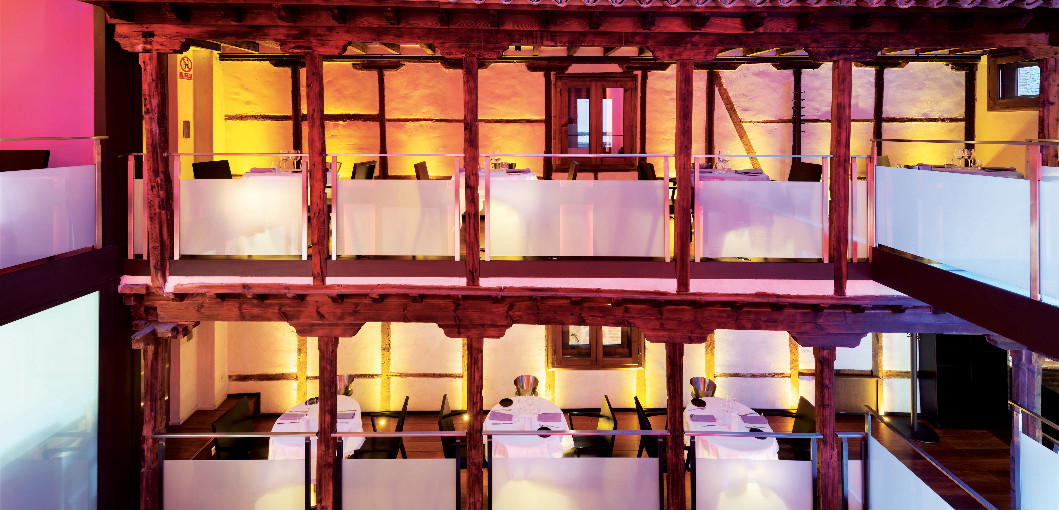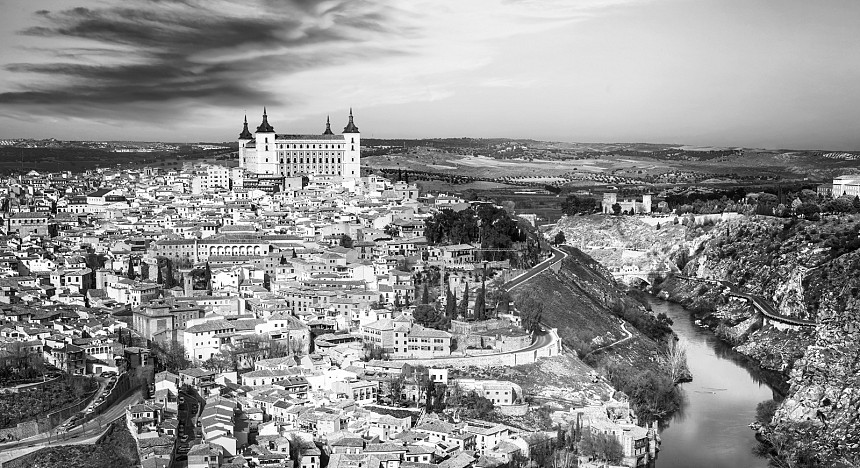Toledo usually attracts visitors for its astounding cultural heritage, but in 2016 the spotlight also falls on its superb cuisine and wines as the city is presented to the world as the Spanish Capital of Gastronomy.
Throughout the year, there are tapas routes, food and wine tastings, special menus and celebrity-chef events to showcase the produce – not just of Toledo but the Castilla-La Mancha region, which includes Manchego cheese, olive oil, saffron and marzipan. Partridge, venison and lamb feature prominently in local dishes, from traditional recipes handed down through the generations or reworked versions crafted by the increasing number of creative chefs who are shaking up Toledo’s restaurant scene – gaining Michelin stars and attracting gourmet travellers to the city and the surrounding region.
It has been 30 years since Toledo achieved UNESCO World Heritage status and the province is a key destination in the commemoration of the 400th anniversary of the death of Miguel de Cervantes with a programme of events this year celebrating the author of Don Quixote de La Mancha. For anyone interested in food, it is worth dipping into the book just to read the fascinating descriptions of what people were eating in Spain in the 17th century.
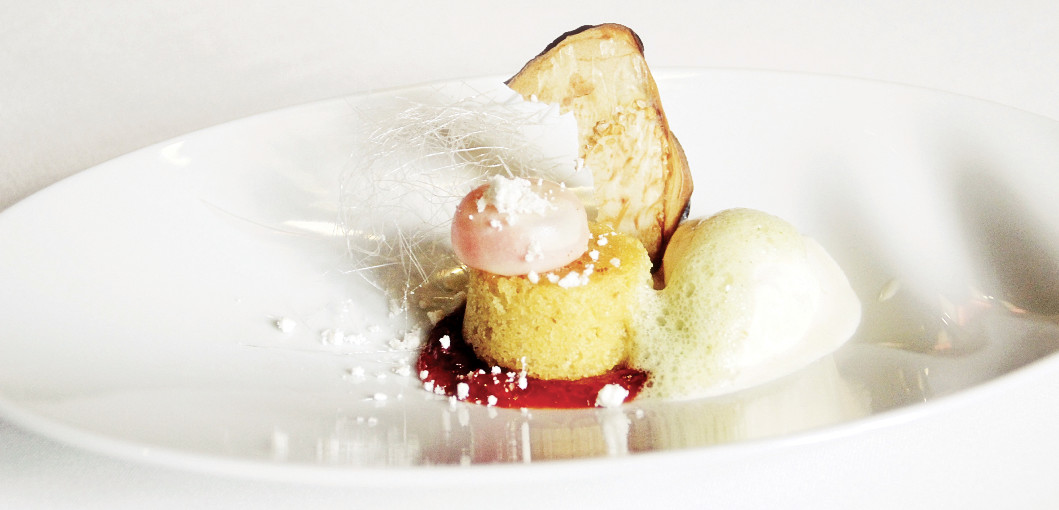
Toledo in its entirety is classified as a national monument, and wandering through the winding lanes of the city on foot is a joy. Set on a steep, granite promontory and looped by the Tagus River, the city’s Arab heritage is manifested in the street pattern, with evocative alleys and peaceful courtyards enclosed in elegant houses with carved wooden balconies – which evolved from the latticed shutters of Moorish tradition – and covered gangways linking buildings across the narrow lanes.
Toledo in its entirety is classified as a national monument, and wandering through the winding lanes of the city on foot is a joy. Set on a steep, granite promontory and looped by the Tagus River, the city’s Arab heritage is manifested in the street pattern, with evocative alleys and peaceful courtyards enclosed in elegant houses with carved wooden balconies – which evolved from the latticed shutters of Moorish tradition – and covered gangways linking buildings across the narrow lanes.
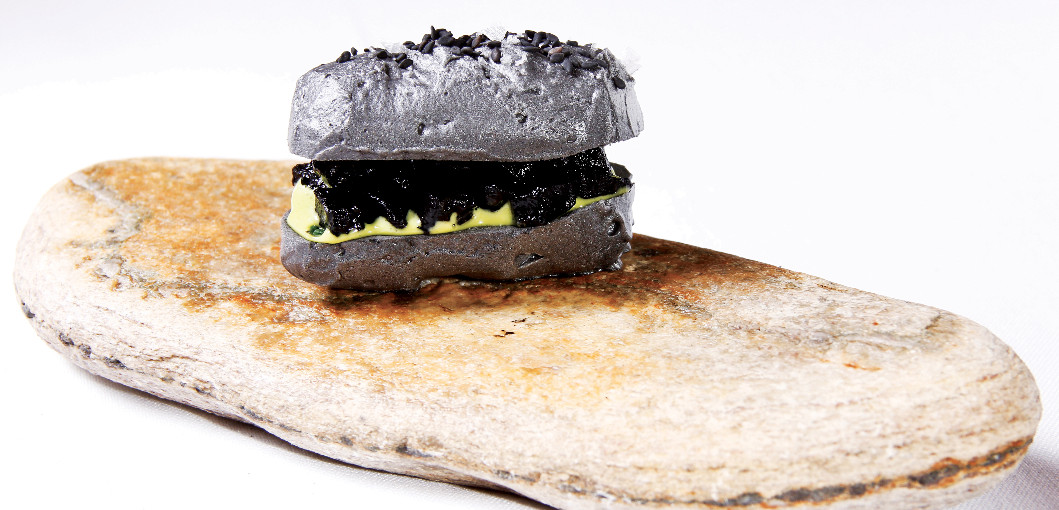
Visiting the wealth of historic buildings and museums is a hugely rewarding experience, but there is a more modern aspect to Toledo, too. The San Agustín market is a gastronomic hub where visitors can try all sorts of artisan products from the stalls and bars, including cheese, charcuterie, seafood, venison burgers made with meat from the nearby Montes de Toledo, and tempting chocolates and cakes by the renowned patissier Paco Torreblanca.
Vestiges of medieval Toledo were uncovered during the excavations to build the market, and these archaeological remains now form part of the wine cellar, with tastings by different producers every fortnight. As you roam upwards through the five storeys of the market, you can try craft beers as well as vermouths from around Spain. As dusk falls, locals gather for cocktails at the rooftop bar to gaze across the beautiful skyline.
Toledo’s best 5: Five dining rooms to discover Spain’s Capital of Gastronomy 2016
Adolfo
It has been 36 years since Adolfo Muñoz opened his flagship restaurant in a medieval building near Santa Iglesia Cathedral. Not just a classic in Toledo, it is now considered one of the most renowned restaurants in Spain. Tapestries and paintings adorn the dining rooms where beamed ceilings and warm tones create a cosy atmosphere. Muñoz was pioneering local produce and updating traditional dishes decades before it became fashionable to do so. You only need to taste the red partridge in two textures to get a grasp of what Toledan cuisine is all about. Another two excellent options are the venison in a red-wine reduction and the roast lamb with honey and pisto Manchego, a mixture of courgette, tomatoes and peppers that is one of the most traditional dishes in the region. The 13th-century wine cellar contains 32,000 bottles from all over the world, but let the sommelier steer you towards a few from Castilla-La Mancha. On weekday lunchtimes, the six-course Market Menu is excellent value at US$42.
Hombre de Palo 7; +34 925 22 73 21; www.adolforestaurante.com
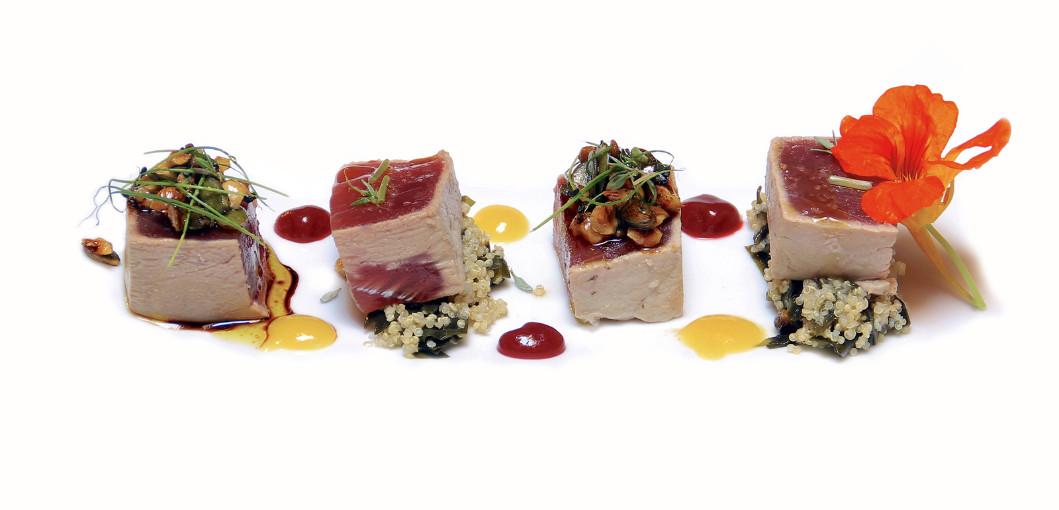
El Carmen de Montesión
Iván Cerdeño gained a Michelin star in 2014, the year the restaurant opened, making it the first venue in the city of Toledo to receive the accolade. Set in a smart area outside the historic centre, the restaurant is run by the same team as the renowned El Bohío in Illescas, 35 kilometres north of Toledo, which has a Michelin star and is helmed by Pepe Rodríguez, the presenter of the Spanish edition of MasterChef. Both chefs are leading the industry in putting Toledo on the gastronomic map. Cerdeño revamps regional favourites to create contemporary dishes with a lighter, more elegant style. While the emphasis is on seasonal ingredients, he casts his net wide to add more exotic touches to his cuisine. In spring, order the souffle with vegetables from Navarre in northern Spain, which yields some of the finest produce in the country.
Urbanización Montesión; +34 925 22 36 74; www.elcarmendemontesion.com
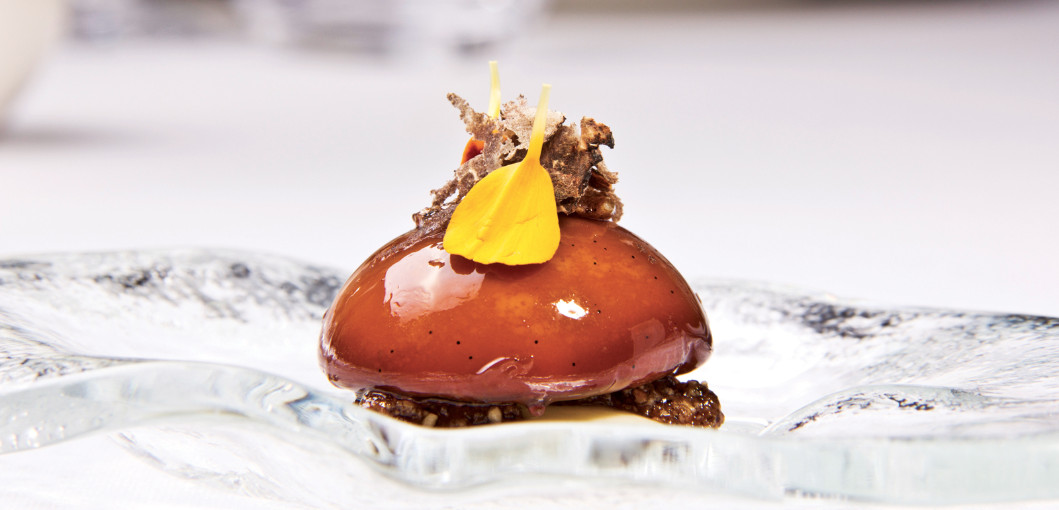
Locum
Set in a 17th-century house hidden away in the old town near the cathedral, Locum’s premises may be traditional but the food is at the height of modernity. The tables are arranged on three floors in a series of rooms with warm golden walls around a courtyard – all very romantic and intimate. Although chef Víctor Sánchez-Beato Gómez bases his menu on the recipes of Castilla-La Mancha, his techniques mean diners are treated to an entirely original experience. Try the cocido stew, where chickpeas take on some unexpected guises. The lamb with a rich and raisiny Pedro Ximénez sherry and red-onion sauce is exquisite, while the red mullet with braised artichokes and mussels is typical of the fresh flavours conjured up by the talented Sánchez-Beato. Sommelier Eduardo Gallardo is particularly knowledgeable about the wines of Castilla-La Mancha. Finish with the hot marzipan cake with cheese ice cream and blueberries.
Locum 6; +34 925 22 32 35; www.locum.es
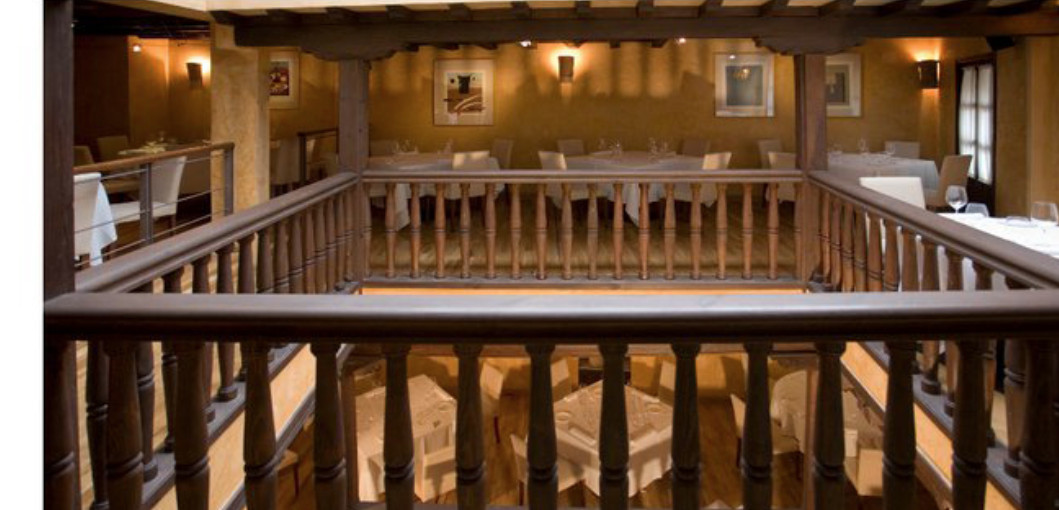
La Ermita
If you know Toledo from the evocative paintings of its spires and rooftops by El Greco, you will want to book a window table at La Ermita. Situated on a hillside outside the centre, on the other side of the river Tagus, it can comfortably lay claim to having the best views over the city. There is more to this elegant restaurant than the spectacular vistas, however, as you will see when you stop taking photos and start perusing the menu. The base of many of the dishes might be traditionally Toledan but La Ermita is known for its exciting contemporary cuisine. Start old school with sensual slivers of marbled, acorn-fed ibérico ham, before ordering the oxtail rice, which is cooked with chocolate, or the roast suckling pig with almond praline and spicy cauliflower. To accompany your feast, try the Shiraz from Finca Sandoval in the Manchuela designation of origin area, which is one of the most interesting wineries in Castilla-La Mancha.
Ermita de Nuestra Señora del Valle, Carretera de Circunvalación; +34 925 25 31 93; www.laermitarestaurante.com
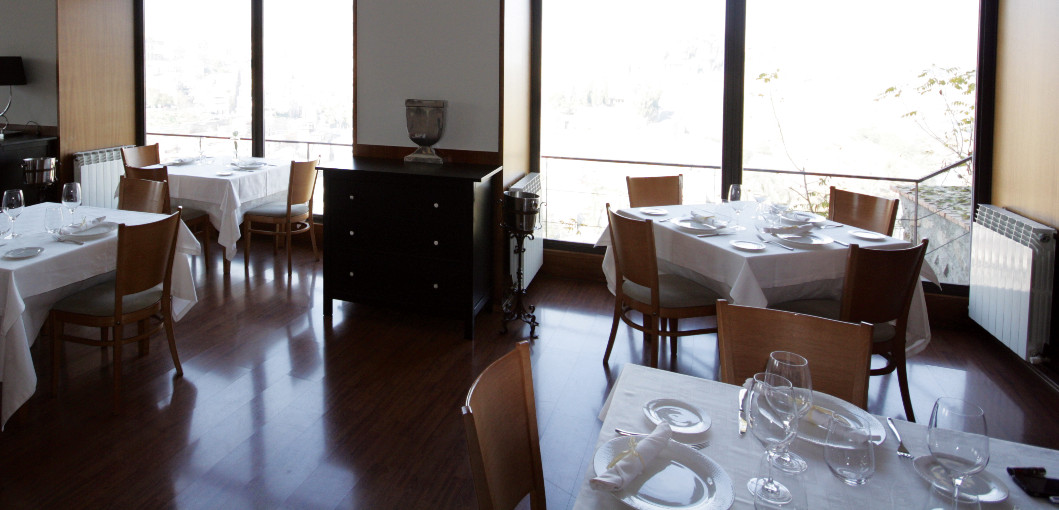
Alfileritos 24
If you are in the mood for a lighter, more informal meal, Alfileritos 24 is a gastro-bar and restaurant in an atmospheric old building near the Plaza de Zocodover, right in the heart of the city. The architecture is classic Toledan with exposed-brick walls, vaulted ceilings and an inner courtyard, but the vibe and the food are refreshingly modern and upbeat. Stay downstairs in the tavern for more of a buzz, or book a table upstairs in one of the galleries if you want to take your time and relax. The menu lends itself to sharing, with particularly good cecina (air-dried beef) croquettes and a marinated partridge salad with baked apple. Follow these with venison loin in rosemary with cherries and pears or keep it simple with thick slices of steak with asparagus.
Calle Alfileritos 24; +34 925 23 96 25; www.alfileritos24.com
